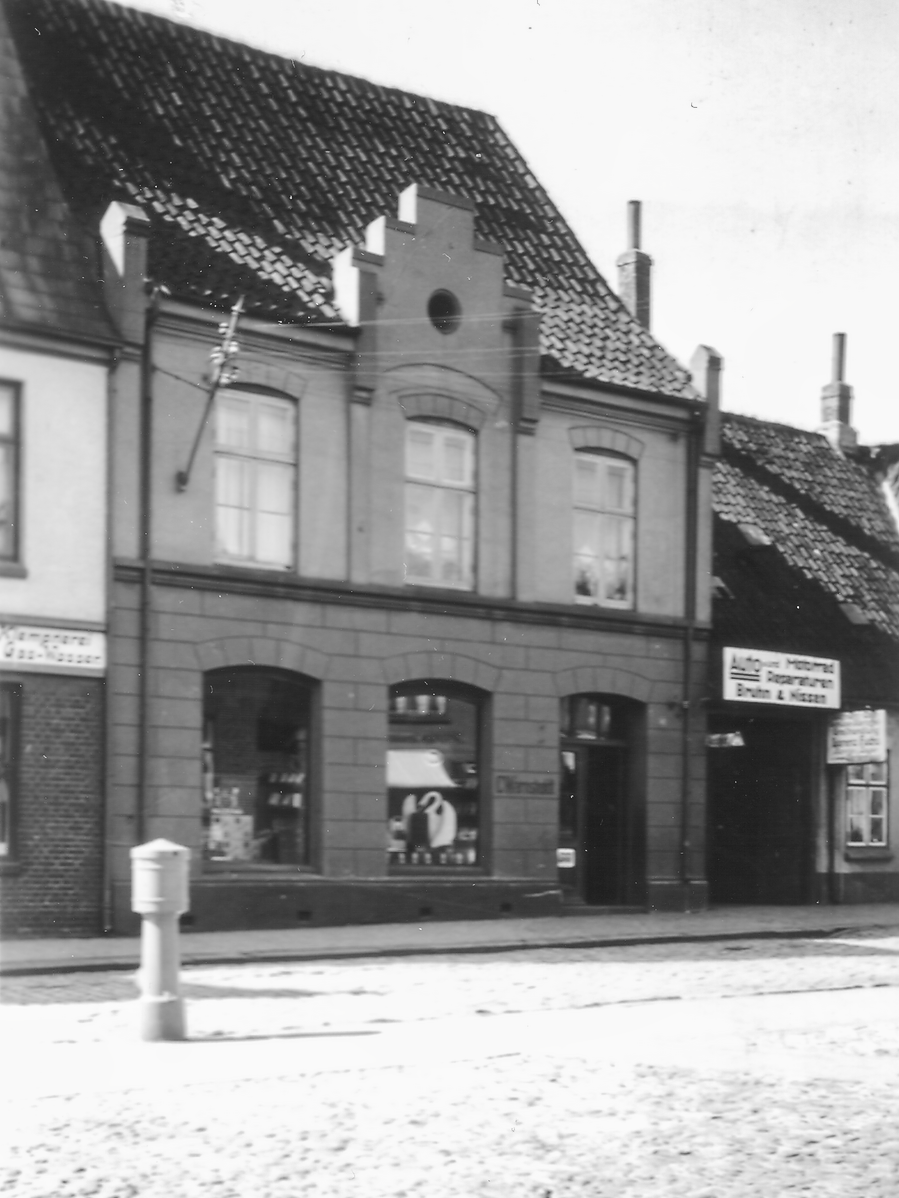The Schützenhof
The former rifle yard of the “Husumer Rifle Guild of 1586”, which still exists today, is the main setting for Theodor Storm’s novella Pole Poppenspäler. The novella, first published in 1874, is one of the poet’s most read stories today.
In the novella, Theodor Storm describes the building: “You know our Schützenhof in the Süderstraße; a beautifully painted shooter, life-size, with a feather hat and rifle was visible on the door back then […]. The old two-story house was neither inhabited nor used by anyone […]; only in the barren, whitewashed hall, which took up almost the entire upper floor, did strong men or conjurers practice their arts.” There in the ballroom of the guild, whose club life had come close to a complete standstill in the 19th century, the “Mechanic and puppeteer” Joseph Tendler “of the Residential city of Munich”, performed, starting with the play “Pfalzgraf Siegfried und die heilige Genovefa”.
The facade, today Süderstraße 42, was redesigned in the neo-gothic style in 1874 (as seen at the picture). This redesign has been partially undone recently. The core of the former guild house, which went into private ownership in 1885, probably dates back to the end of the 16th century. The establishment of the guild was probably supported by Duke Adolf of Schleswig-Holstein-Gottorf (1526–1586). Rifle guilds were interesting to him because in addition to their social function (mutual support of the rifle brothers, promotion of cohesion through riflemen’s festivals), they could also perform military tasks as part of militias.
Text by Holger Borzikowsky (1947–2015)
Translation by Bjarne Albertsen



